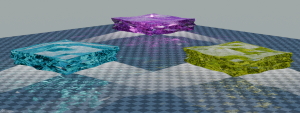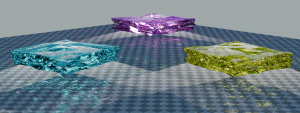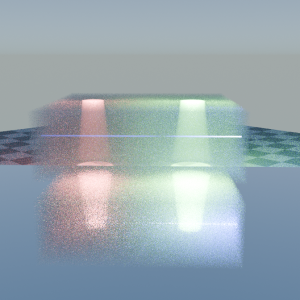Page 1 of 1
Metropolis at a closer look
Posted: Thu Jun 05, 2025 8:01 pm
by FarbigeWelt
How the three parameters of the Metropolis Sampler influence rendering.
Max Consecutive Rejects (MCR)
Halt Condition: 64 Samples
Materials: Clear Glass, Rough Glass, Homogenous Glass
Lights: Area, 0.01^2

- MCR: 8

- MCR: 32

- MCR: 128

- MCR: 512

- MCR: 4096
Disadvantage: render time increases with higher MCR.
Advantage: Reflections and Caustics get more dynamic aka brighter.
Re: Metropolis at a closer look
Posted: Fri Jun 06, 2025 7:54 pm
by FarbigeWelt
Large Mutation Probability (LMR)
Fix Settings:
Samples 64
Max Consecutive Rejects 1024
Image Mutation Rate 10%
Scene with a box made from Material Null with Homogenous Volume and IOR of Air. There are three different Lights: red Spot, green Area, blue Area>Laser. The properties of the Area light has been set that its beam looks like the Spot light.

- LMR 10%

- LMR 50%

- LMR 100%
The larger LMR the fainter the mirrored laser.
Re: Metropolis at a closer look
Posted: Thu Jun 12, 2025 11:59 am
by FarbigeWelt
Image Mutation Rate (IMR)
Same Scene as above.
Metropolis Settings
Large Mutation Probability: 10%$; fix
Max Consecutive Rejects: 1024; fix
Image Mutation Rate: 1..10%, 20%, 40%; variable

- IMR 1%

- IMR 6%

- IMR 10%

- IMR 40%
With a low IMR fog in Null material is rather grainy. The higher IMR the finer the fog, especially the mirrored. On the other hand too high IMR disturbs the mirrored laser beam. In my opinion IMR of 10% is a good choice for this scene.